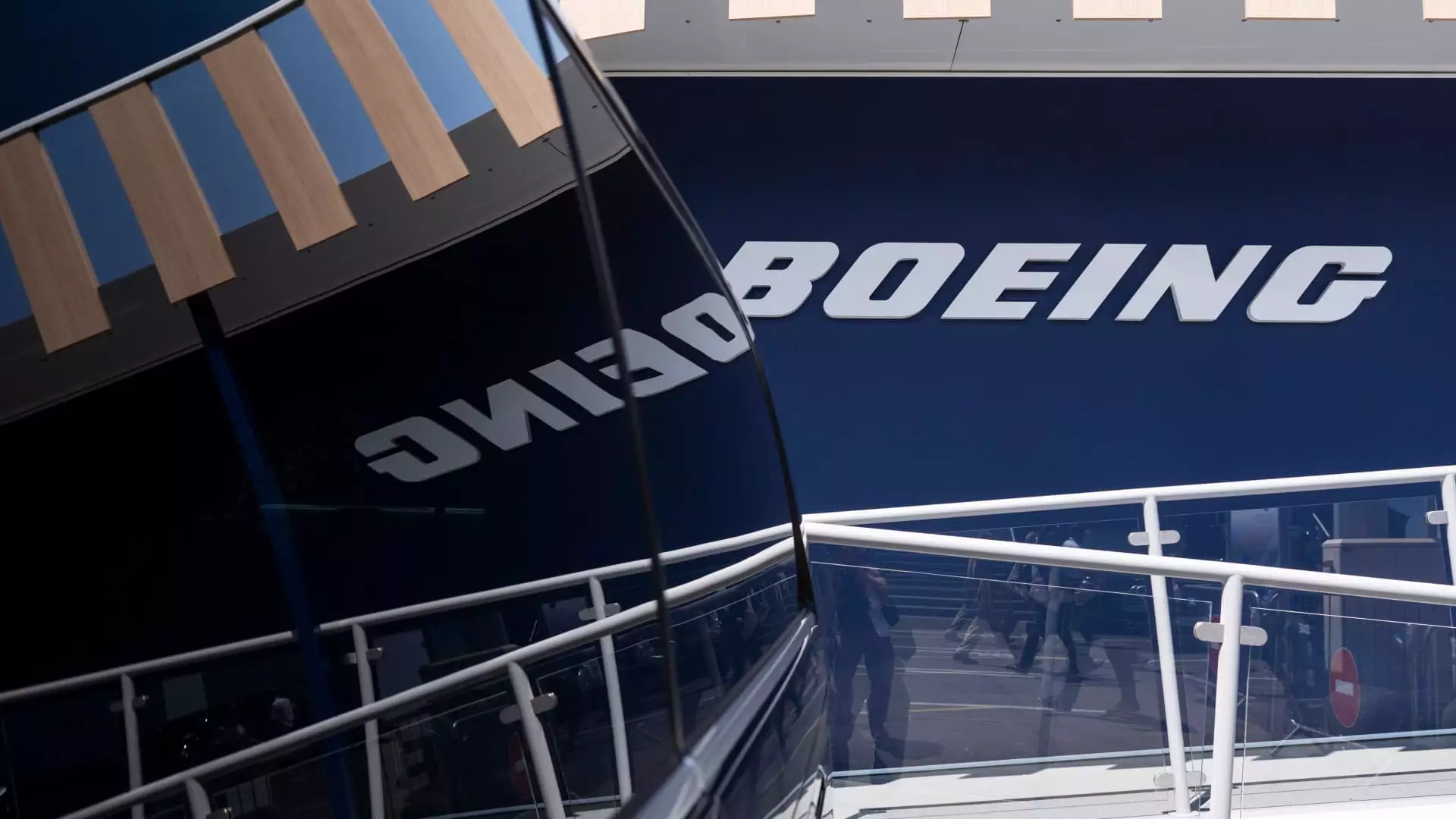Boeing, once synonymous with aerospace innovation and American engineering prowess, has postured itself on the cusp of revival after years mired in turmoil. For nearly a decade, the company’s reputation sank under the weight of repeated crises—from deadly crashes to production flaws, and a perceived cultural decline that alienated customers and investors alike. The momentum under CEO Kelly Ortberg signals a potential turning point, yet the scars of the past cast long shadows, raising doubts about whether this is merely a temporary recovery or the beginning of a transformative renaissance.
The remarkable rally in Boeing’s shares—surging over 30% in a year—is a stark contrast to the turbulent history that nearly crippled the airline manufacturer. While stock markets are often quick to celebrate short-term gains, they tend to overlook the deep-rooted issues still festering within the organization. The fact that Boeing is suddenly profitable after years of losses certainly breathes optimism into the narrative, but this financial turnaround might be superficial if underlying systemic problems persist. The power of perception among clients and regulators remains fragile, particularly when recent safety lapses and quality concerns have undermined decades of credibility.
Leadership’s Fragile Grip on Change
Kelly Ortberg’s appointment was greeted with skepticism initially, yet his hands-on approach appears to catalyze a more cohesive corporate culture. His engineering background and commitment to engaging directly with teams have earned cautious hope from industry insiders. However, leadership transitions alone cannot repair a fractured organization; they can only set the stage for genuine cultural change if supported by consistent actions.
Indeed, the efforts to cut costs—layoffs, union negotiations, and asset sales—are symptomatic of a company desperate to stabilize financially. These measures, while necessary in the short term, risk further eroding morale if not accompanied by meaningful investments in quality assurance and innovation. The recent incident involving the Boeing 737 Max 9 underscores how fragile this recovery remains. A seemingly minor hardware failure could escalate into a perilous safety crisis that further damages Boeing’s strained reputation and triggers heavy scrutiny from regulators.
The aerospace industry is unforgiving; one misstep can undo years of grudging progress. Boeing’s delayed certification of new aircraft, like the Max 10 and Max 7, underscores the persistent delays that plague their pipeline. These delays threaten to alienate loyal airline customers who depend on predictability and efficiency—a necessity in an industry where timing is directly tied to profitability.
Challenges Beyond the Horizon
A critical concern that remains underappreciated is Boeing’s archaic aircraft portfolio. The legendary 737 was first introduced in 1967, and despite iterations, it remains a symbol of aging design. Industry insiders are calling for Boeing to accelerate the development of a new mid-sized jet, which could revitalize its product line and reassert technological dominance. Without innovation, Boeing risks losing further ground to competitors like Airbus, which are swiftly advancing their offerings.
Moreover, issues within Boeing’s defense division demonstrate that the company’s troubles extend into its strategic armaments and government contracts. The delays and costs associated with programs like Air Force One and the KC-46 tanker tarnish Boeing’s image as a reliable partner to the U.S. government. President Trump’s public dissatisfaction with the presidential aircraft underscores how political pressures and operational setbacks can intertwine, further complicating the company’s efforts to regain trust.
The company’s regulatory environment also remains a significant hurdle. The FAA’s capped production rate illustrates a cautious stance, but an ambitious push to increase output hinges on regulatory approval and safety assurance. This fine balancing act is crucial—escalation without safety can lead to catastrophic consequences, but stagnation risks economic disaster and further erosion of airline confidence.
Is Reinvention Possible or Just a Mirage?
Boeing’s future hinges on its ability not merely to recover but to reinvent itself. The company must embrace innovation, investing in next-generation aircraft that prioritize safety, efficiency, and sustainability. A failure to do so risks the manufacturer becoming a historical relic instead of a leader in aerospace technology.
The internal cultural shift is arguably the most vital component. A corporation plagued by past mistakes must foster an environment where safety and quality are sacrosanct. Leadership’s visibility and sincerity in implementing these values will determine whether Boeing can truly emerge from the shadow of its failures or simply cling to superficial progress.
Furthermore—and perhaps most critically—the industry’s shifting landscape demands that Boeing reexamine its core strategy. The airline market is evolving rapidly with new competitors, changing passenger expectations, and environmental challenges. A company rooted in traditional models must innovate—whether through cutting-edge aircraft design, digital transformation, or sustainable practices—to secure its future.
There is a faint but persistent hope that Boeing’s recent efforts mark a genuine shift. However, history warns us that industries—and institutions—must demonstrate consistency over time before trust is fully restored. For Boeing, the journey toward redemption is far from over; it remains a fragile balancing act between rebuilding credibility, fostering innovation, and ensuring safety remains paramount.

